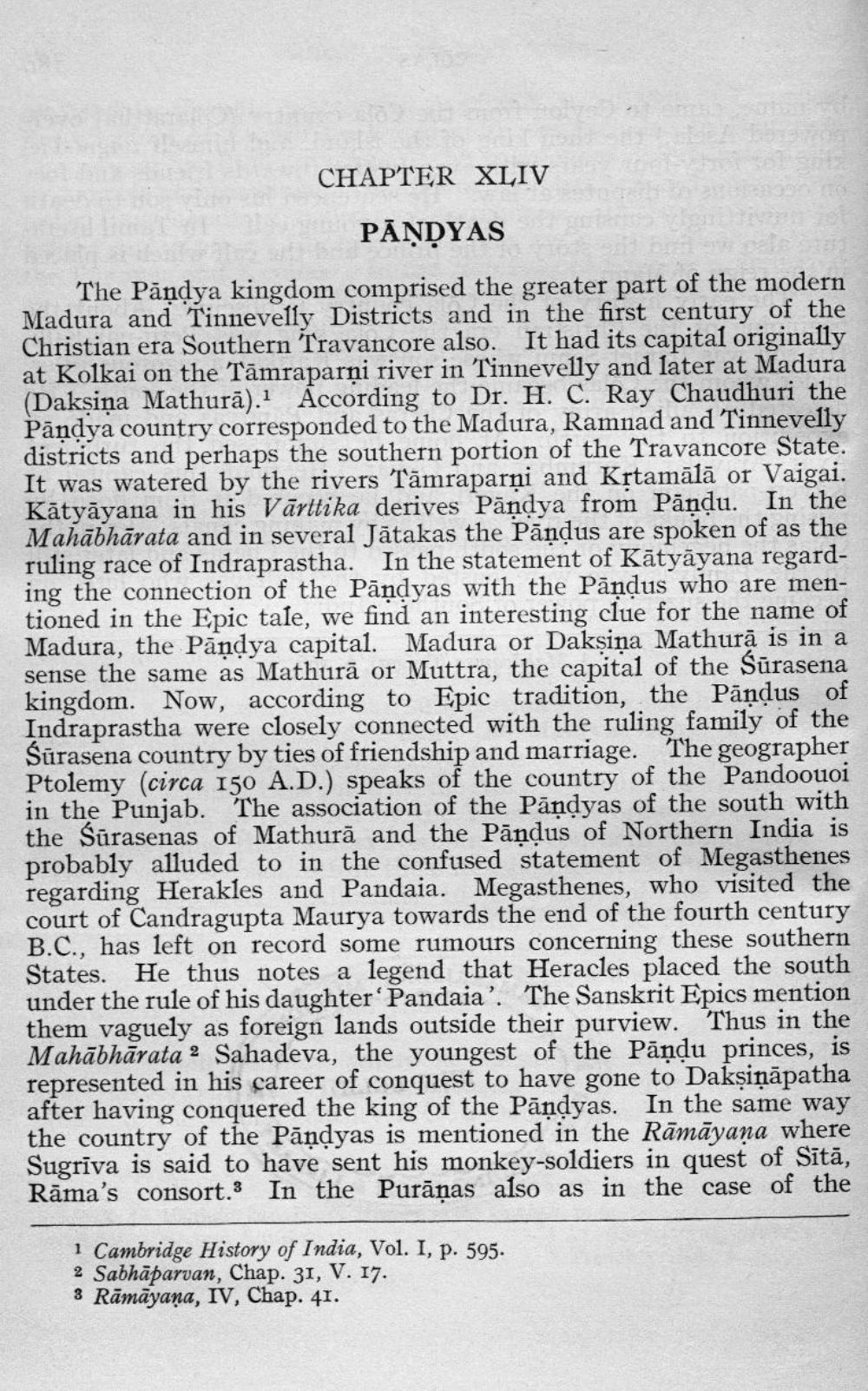________________
CHAPTER XLIV
PĀŅDYAS
The Pāņdya kingdom comprised the greater part of the modern Madura and Tinnevelly Districts and in the first century of the Christian era Southern Travancore also. It had its capital originally at Kolkai on the Tāmraparņi river in Tinnevelly and later at Madura (Dakşiņa Mathurā).1 According to Dr. H. C. Ray Chaudhuri the Pāndya country corresponded to the Madura, Ramnad and Tinnevelly districts and perhaps the southern portion of the Travancore State. It was watered by the rivers Tāmraparņi and Krtamālā or Vaigai. Kātyāyana in his Vārttika derives Pāndya from Pāņdu. In the Mahābhārata and in several Jātakas the Pāndus are spoken of as the ruling race of Indraprastha. In the statement of Kātyāyana regarding the connection of the Pāņdyas with the Pāņdus who are mentioned in the Epic tale, we find an interesting clue for the name of Madura, the Pāņdya capital. Madura or Dakşiņa Mathurā is in a sense the same as Mathurā or Muttra, the capital of the Sūrasena kingdom. Now, according to Epic tradition, the Pāņdus of Indraprastha were closely connected with the ruling family of the Śūrasena country by ties of friendship and marriage. The geographer Ptolemy (circa 150 A.D.) speaks of the country of the Pandoouoi in the Punjab. The association of the Pāņdyas of the south with the Sūrasenas of Mathurā and the Pāņdus of Northern India is probably alluded to in the confused statement of Megasthenes regarding Herakles and Pandaia. Megasthenes, who visited the court of Candragupta Maurya towards the end of the fourth century B.C., has left on record some rumours concerning these southern States. He thus notes a legend that Heracles placed the south under the rule of his daughter'Pandaia'. The Sanskrit Epics mention them vaguely as foreign lands outside their purview. Thus in the Mahābhārata 2 Sahadeva, the youngest of the Pāņdu princes, is represented in his career of conquest to have gone to Dakşiņāpatha after having conquered the king of the Pāņdyas. In the same way the country of the Pāņdyas is mentioned in the Rāmāyana where Sugrīva is said to have sent his monkey-soldiers in quest of Sītā, Rāma's consort.3 In the Purāṇas also as in the case of the
i Cambridge History of India, Vol. I, p. 595. 2 Sabhāparvan, Chap. 31, V. 17. 3 Rāmāyana, IV, Chap. 41.




